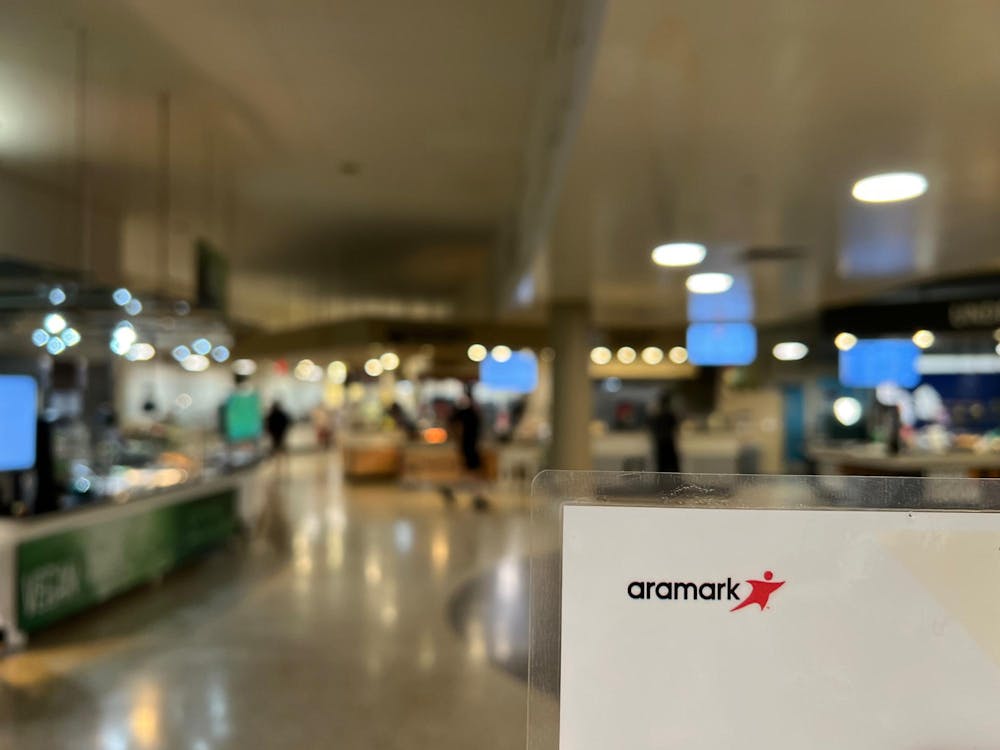The fencing surrounding the Whispering Wall has been removed following the replacement of the bricks containing an inscription to Confederate soldier Frank Hume. The updates have received mixed reactions from students, many of whom originally called for the wall’s full removal.
Designated in 1938 as the Frank Hume Memorial Wall, the structure is named after Confederate soldier and Virginia politician Frank Hume, who had no connection to the University.
Students have informally used the name “Whispering Wall” for years to describe the structure’s ability to carry sound from one side to the other. Located in Newcomb Plaza, the marble memorial also contains a fountain surrounded by a curved bench.
The Board first approved a recommendation made by the Naming and Memorials Committee in to change the official name of the monument and replace the inscription with contrasting bricks in June 2021. The Comittee was created in February 2021 after the formation of the Racial Equity Task Force in response to nation wide “Black Lives Matter” protests and the murder of George Floyd.
The inscription formerly located on the structure described Hume as a “devoted Virginian who served his native state in the Civil War and Legislative Hall.” Now officially known as the Whispering Wall and with the dedication to Hume removed, the structure was unveiled to the public.
The memorial’s continued presence is not supported by all. In 2020, the Minority Right Coalition called for the University to remove the memorial in a petition that received over 2,000 signatures. The MRC is an alliance of 10 organizations with the common goal of facilitating learning and cooperation.
MRC referred to the Whispering Wall and its inscription as a reminder of the University’s racist, Confederate past because of Hume’s time as a Confederate soldier.
“The Whispering Wall, no matter what it has evolved into, is still a Confederate monument,” the petition read. “If the University truly wants to atone for its past and ensure that its future is more just, more accepting and more inclusive, the Whispering Wall will be taken down.”
After MRC leaders published the petition and sent an open letter to University President Jim Ryan, the Board voted to either remove or rededicate the wall in September 2020. Following this vote, the memorial was vandalized with painted phrases reading “You can’t silence us” and “BLM” twice in April 2021.
Following the Board’s vote to have the wall rededicated In June 2021, Student Council responded by passing a resolution denouncing the Board’s decision to alter the wall instead of removing it.
“The continued presence of this memorial and its physical foundation serves as a reminder to Black students and students of color that white supremacy is still protected today and the University has a hand in this protection,” the resolution reads.
Today, resolution co-author Gaby Hernandez, chair of the representative body and fourth-year College student, reiterated her disapproval of the Board’s decision to have the wall rededicated.
“Personally, as a student of color, I'm very frustrated,” Hernandez said. “I feel like the University completely ignored marginalized students' calls to remove the wall.”
With the University not releasing a public announcement regarding the wall’s unveiling, Hernandez noted many other students are likely unaware of the recent development.
“I think that once people start seeing [the Whispering Wall], especially with a lot of people like in these organizations, we're probably going to come together to have a serious conversation,” Hernandez said.
Resolution co-author Tichara Robertson, co-chair of the MRC and third-year College student, said the replacement of the inscription with different bricks cannot overcome the weight of the wall’s original purpose.
“A change in the structure does not change why it was built and who it was built for,” Robertson said. “Any attempt to contextualize will fall short because there will always be a direct misunderstanding of the true history.”
Michael Suarez, chair of the Naming and Memorials Committee and professor of English, led the effort to submit a proposal regarding the memorial to University President Jim Ryan and the Board.
Following the unveiling of the wall, Suaraez emphasized the importance of contextualizing the memorial’s role in the University’s history.
“We will be providing a sign, similar to the recently installed change-agent markers around Grounds, to tell the story and to affirm the University's commitment to be a more welcoming and inclusive community.” Suarez said.
The group’s recommendation highlights the structure’s role as a focal point of Newcomb Plaza where students socialize and promote organizations.
“It is our hope that the newly configured and repurposed fountain and bench, with its Whispering Wall stripped of all memorializing inscription, together with the landscaped plaza and surrounding environment on which it stands, will be a place that fosters authentic community, promotes nuanced and complex historical understandings and occasions debate,” the document reads.







